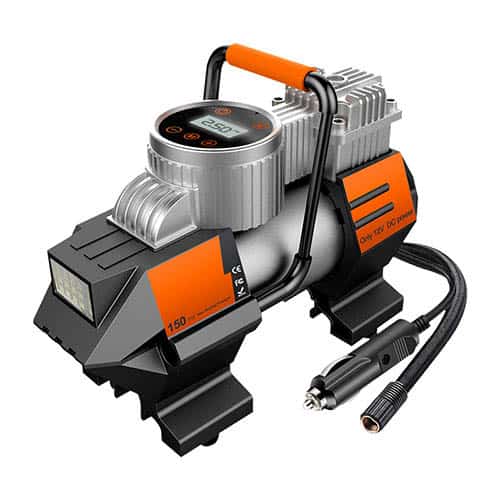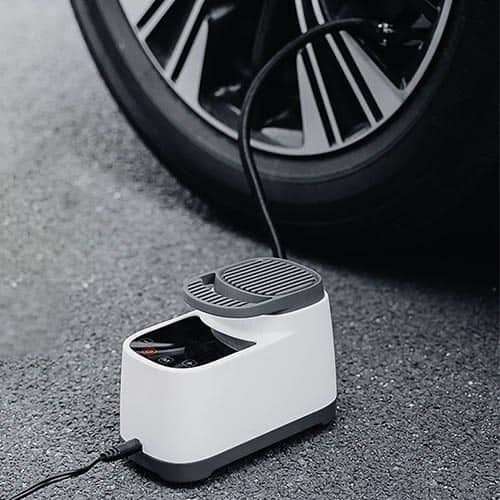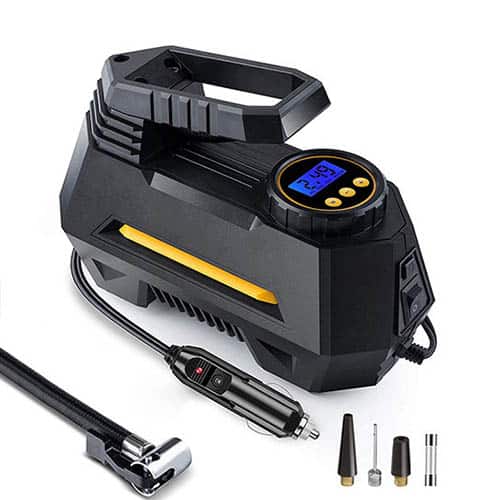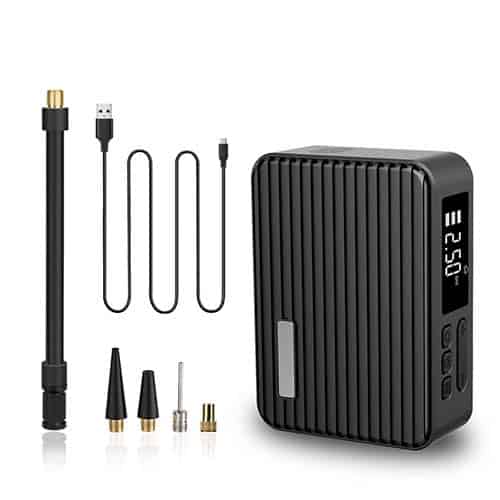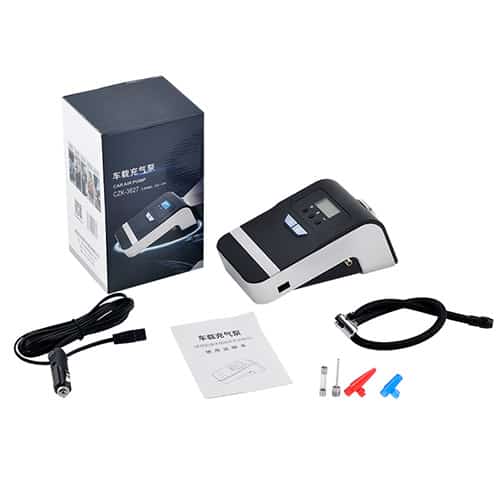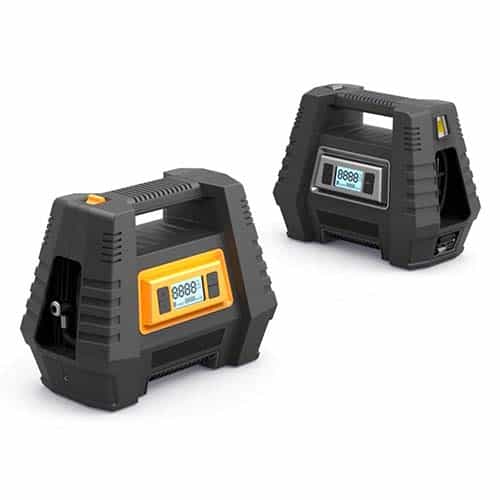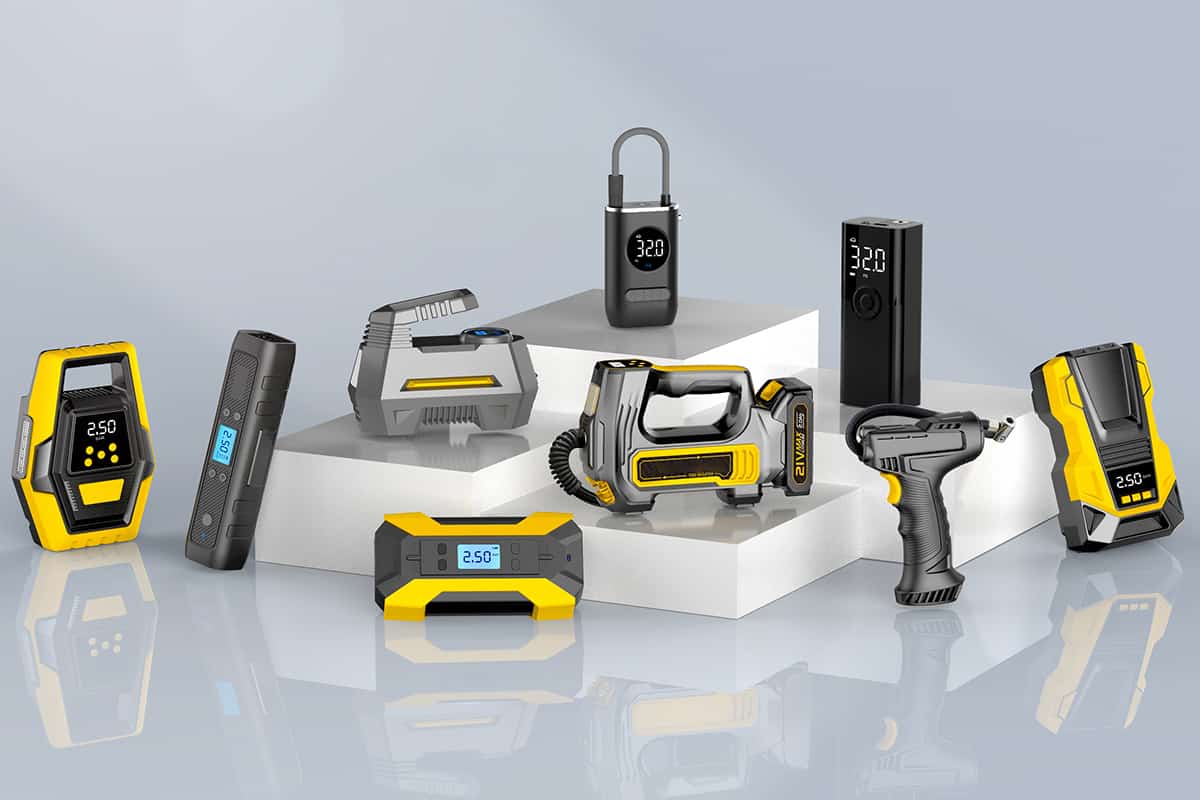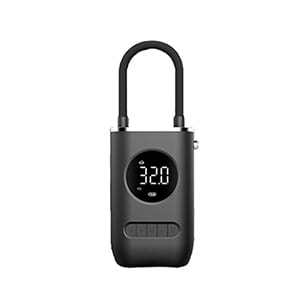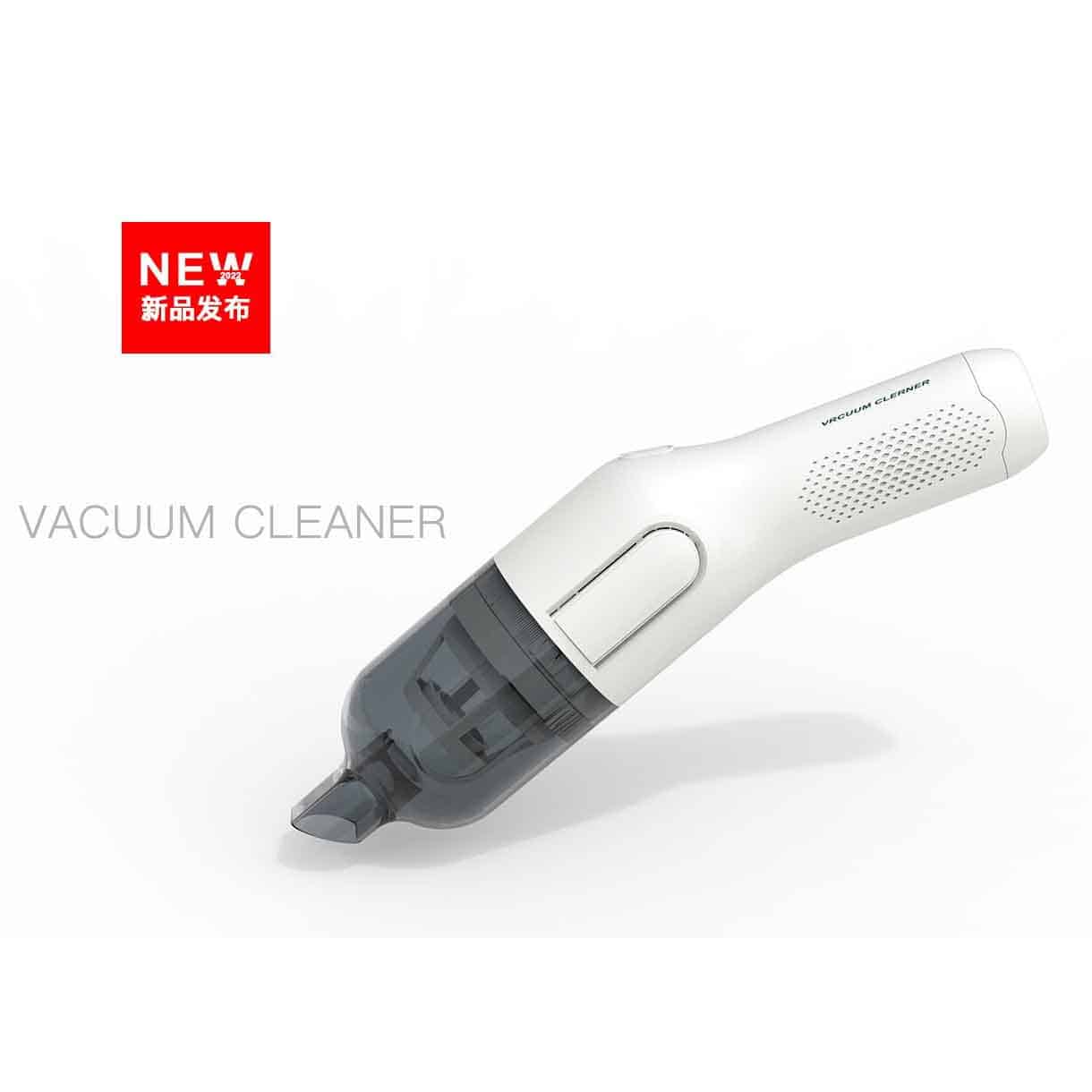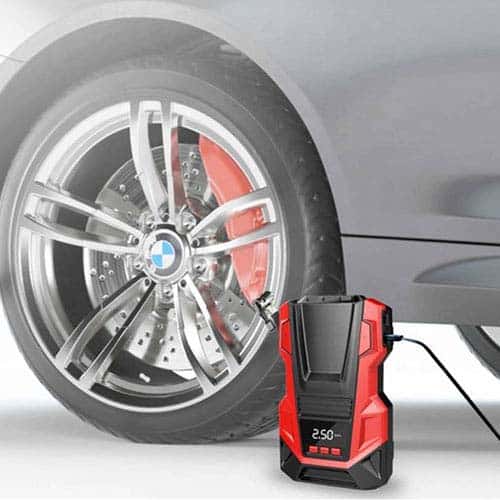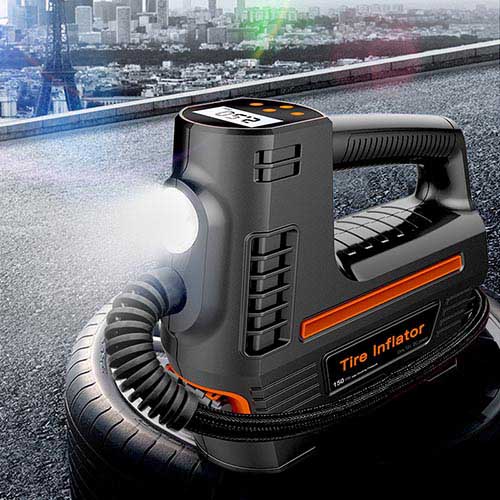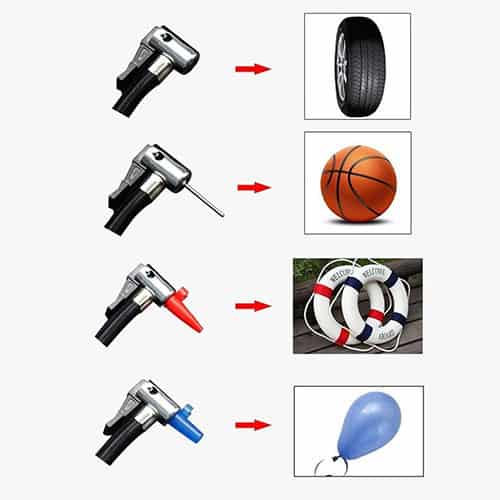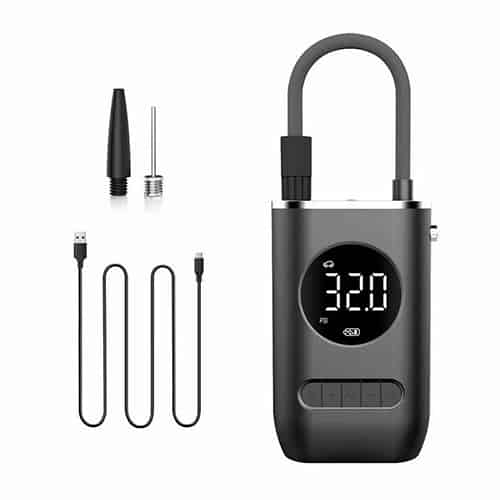Doesn’t matter how many safety features your car may have–the fact is one of the most important parts are the tires.
A good set of tires will provide you with optimal control, performance, safety and a smooth ride–but one of the most integral factors of your tire’s ability to perform is making sure it has the perfect amount of pressure. Not only do properly inflated tires prolong the life of your rubber and provide a better performance, but they can also save you money at the pump as well. Make sure you understand the benefits of what to look for when shopping for new tires.
In this post, we’ll break down how to properly maintain the correct tire pressure, where to find inflation guidelines on your car, and how to use a tire inflator with the pressure gauge function so you can begin to learn and use these necessary driver skills.
Under Inflation
Tires that are under-inflated are the most hazardous to you as a driver, and to others on the road. Underinflation is the number one cause of tire failure on the road and causes the tire to flex more which produces heat–inevitably resulting in a blowout. In fact, one study says that even low inflation of -8psi can reduce the life of your tires by up to 16% or about 15,000 km.
When tires are underinflated, the weight of the car will place pressure on the outer edge of the contact patch, and even onto the sidewalls of the tire. This causes uneven wear that can also contribute to tire failure.
Over Inflation
Similarly, a set of tires that are consistently kept over-inflated can also contribute to the reduced life of your rubber.
Over-inflated tires can also contribute to reduced traction and safety while driving, as the contact patch of rubber that actually touches the road is reduced because of the tubular structure of the tire itself. An over-inflated tire will produce accelerated wear and tear in the center of the tread pattern as a result.
Where to Find Correct Inflation Information
Depending on the make and model of your car, inflation information specific to the weight and purpose of your car can be found on the inside of the driver’s door well. Starting in 2003, this informational sticker provides drivers with the automaker’s recommended inflation guidelines–including the original equipment tire size and info on the spare tire’s inflation, too. If your car is older than 2003, similar info can probably be found on the fuel filler door, under the hood, or in the glovebox or center console. Recommended manufacturer inflation info can also be found in the owner’s manual.
Similarly, each tire manufacturer also includes the recommended tire inflation measurements printed directly onto the sidewall of their tires. Tire pressure is measured in pressure per square inch (psi). The tire will say something along the lines of ‘Max Load Single’ and will direct you on how much air to put in the tires. Never over-inflate on purpose.
Use a Tire Inflator To Know Tire Pressure
It’s difficult to accurately measure your tire’s pressure if you can’t properly operate a tire pressure gauge. Most tire inflator has pressure gauge functions, and now a new portable tire inflator usually has a digital display, that will simply tell you the pressure on a digital screen. In either situation, consult the tire manufacturer’s recommended inflation guidelines to properly inflate your tires; doing so will not only prolong the life of your investment, but will give you added traction, performance, and confidence while driving!
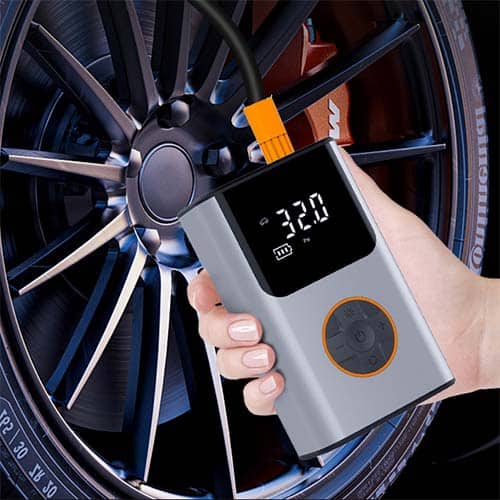
Kelylands tire inflator with digital tire pressure gauge function
At last, if you would like to find out more about our tire inflators, please feel free to leave a message online, chat with our team on WhatsApp +86 170 5109 5790 or send us an email at sales@kelylands.com. We always welcome your inquiries.

